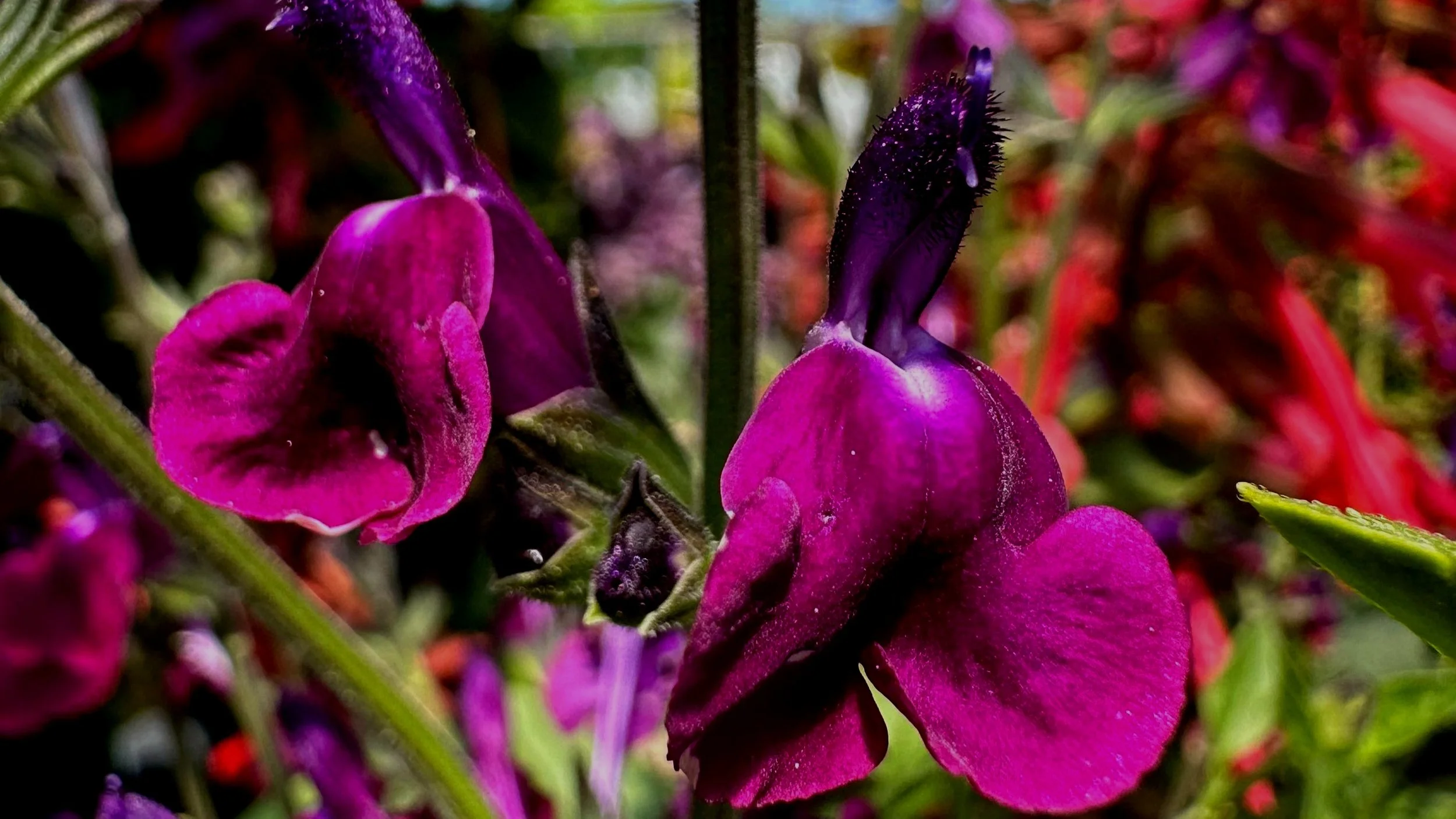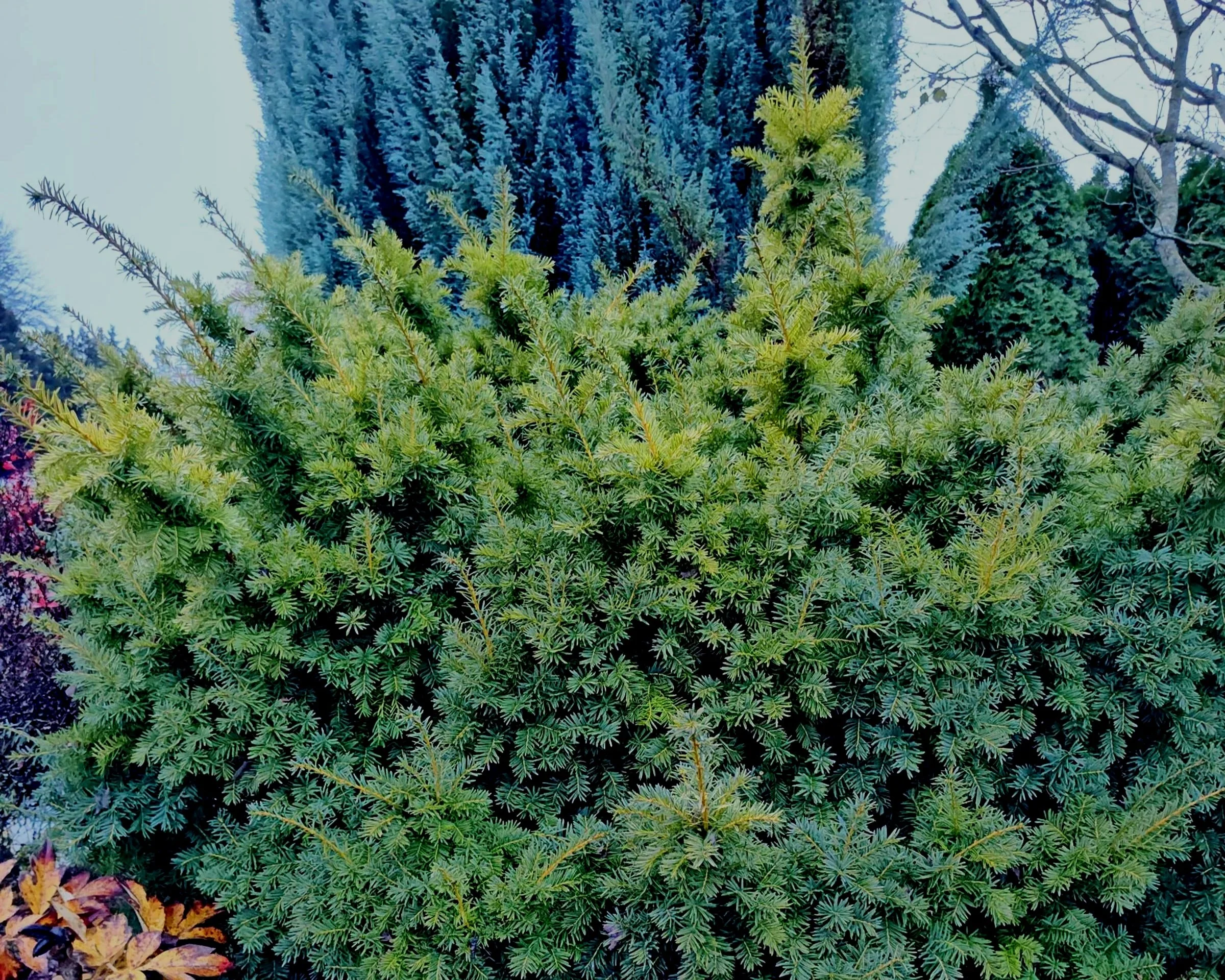Plants that help attract pollinators seem to increase in popularity each and every gardening season. It always brings a smile to my face when I see another gardener joining the pollinator preservation craze! One such garden staple for us locally are the many species and cultivars of Salvias. These summer blooming beauties offer some serious flower power for both sunny landscapes and containers, all while attracting butterflies, bees, and hummingbirds to the garden. I use some Salvias in the ground in my own garden, while others serve as “thrillers” for me in sunny pots. In June, they begin their summer long flower show, brightening my landscape and allowing me to admire all of the lovely pollinators that visit them day after day.
Seemingly endless options exist for Salvias, or Sages as we call them, with some being ultra-hardy, a few serving as strictly annuals, and many others hanging out right on the hardy line in our climate zone. A newer term I hear for those Zone 7/Zone 8 perennials is “temperennial”. This might confuse some, but think of this group as fun “annual” type plants that may actually come back after mild winters. I can certainly attest through my own trials and tribulations that unfortunately sometimes they do not. Don’t think of this as a failure on your part, Mother Nature just does what she wants sometimes. Roll with it (like I do) and grab another if one happens to perish from the winter conditions. I will suggest that often it is not the cold in our region that does them in, but rather the wet due to inadequate drainage.
Salvias of all kinds love heat and full sun, and are super drought tolerant once established. As I mentioned above, drainage is always going to be of the utmost importance in the garden. They do not require copious amounts of food at all. Utilizing a good organic rose and flower food is ideal - once in April and another dose in early July if needed. When planting new ones, be sure to add some food and compost mixed with the native soil, giving them a nice spot to thrive. Just remember when you dig a hole for your new specimen to make sure that there is no clay underneath. A spot with at least two feet of loamy soil is best. If you dig down a foot and hit clay, this will need to be corrected to make sure that the water does not collect around the roots in winter.
A few weeks back I mentioned some annual varieties of Salvia, some of which I use in my pots for added hummingbird impact. I am perfectly fine adding these to the great compost heap in the sky each winter, then replacing them the following spring. The ‘Skyscraper Series’ comes in all kinds of colors that pop, but for my taste the best is the orange. Many other named hybrid flavors like ‘Wendy’s Wish’ (hot pink), ‘Love and Wishes’ (magenta purple) and ‘Roman Red’ (bright red) grace my annual plantings each year, and boy do my resident hummingbirds appreciate them. If only I could collect rent from just a few of these wondrous birds, that would surely help with purchasing more plants for them each season… right? These annual-type Salvias are typically Zone 9 winter hardy, so enjoy them for the summer through the fall frost and then add them to the compost pile.
The term “temperennial” applies to the marginally hardy Salvias, those rated to Zone 7 or Zone 8. This gets us down to the 10 to 20 degrees Fahrenheit for lows in winter, which (most years) allows them to come back the following spring. The single most popular plant the past few years is a Salvia called ‘Hot Lips’ (bright red/white flower and Zone 8 hardy), a variety of Salvia microphylla. Both of mine came through this last winter nicely at my place in Everett, but other years I have lost one, or both. I always embrace the opportunity to replace them if required, pulling out the debit card and procuring them again in those springs where they did not survive. Others I enjoy are flavors of Salvia guaranticia, a South American native and what most gardeners refer to as “blue anise sage”. There are a number of options on this Zone 8 specie, typically ones like ‘Black and Blue’, ‘Rhythm and Blue’, and ‘Rythmic Blues’ can be found at garden centers. All are superior hummingbird magnets with fragrant foliage and lovely deep blue to purple flower stalks – perfect little trumpets to sip nectar out of day after day all summer long. ‘Amistad’ is another great Salvia to use with blackish-purple flowers and a lovely upright habit. I have not had as much luck with these as true perennials, but it is still does not stop me from trying to grow them again. The hummingbirds told me anything less would be uncivilized.
To me, one major factor towards yearly success with these “temperennial” Salvias is pruning, or lack thereof in this case. I never cut back my woody Salvias in fall, I wait until April. Once spring sun arrives, you will see green nodes popping out of healthy wood here and there. They can then be cut back to your desired height above this new growth, removing any dead wood and keeping them more bushy and compact. All Salvia blooms on new wood, so remember that you are never going to diminish your flower power with a spring pruning.
Truly perennial Salvias are referred to as “meadow sage” and represent a different specie, Salvia nemerosa. These sturdy, drought tolerant gems often will handle winters down to Zone 3 or 4, well below zero degrees. An all-time popular cultivar is ‘May Night’ (indigo blue flowers), a durable plant that thrives in heat and bloom nicely until mid-summer. Newer introductions like the ‘Apex Series’ (white, pink, or blue options) bloom longer, lasting until fall when deadheaded a bit over the summer. Perhaps my favorite newer variety is ‘Dark Matter’, another superior flavor of Salvia nemerosa with deeper purple blooms that continue throughout summer and fall. More perennial versions of sage are out there, discovering the ones that fit your style will be easy!
June is pollinator month, so please pause to contemplate how you can ensure not only their survival but also how to help them thrive in your very own garden ecosystem. Plants like Salvias are a great choice, but then again so are many others as well. Variety is one key to success as each and every specimen will offer varying creatures something of benefit. Using safe products, including organic fertilizers and amendments, is the safe way to go for sure. Visit your local garden center and gaze up all of the glorious perennials in bloom this time of year, including Salvias, then add some to your own garden. By increasing your plant palette for pollinators you are offering them a safe haven in your landscape, and helping them to continue to thrive in the future.




